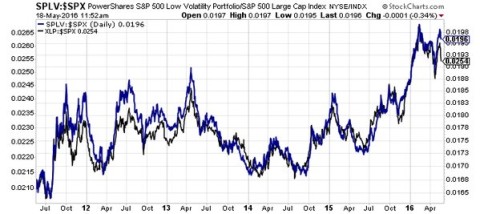Sorry for the radio silence over the last week or so. Life and travel got in the way. I’m in NYC this week if any readers happen to see this and enjoy spending time with nerds….Anyhow, here are some things I think I am thinking about:
1 – The Value of Critical Self Assessment. One of the great things about writing in a public forum is that you’ll inevitably say some stupid things (I’ve said more than my fair share of stupid things over the years!). This creates a certain need for accountability because public figures earn their right to be public by justifying why their opinions are worthy of being public at all. I take this very seriously and it’s one reason why I value the back and forth on this website and in the forum. The website is very much a learning platform and a place where I can grow and expand my horizons while hoping to provide something valuable to the readers. But a big part of that requires the ability to be critical of one’s self.
I bring this up in light of Nate Silver’s very public critical self assessment of how he missed the Donald Trump phenomenon so badly. I don’t like that Silver was wrong because a lot of people take his opinion seriously. But what’s valuable about this process is that Silver’s own process will become improved as a result of this assessment. I always like to say “it’s in learning to be wrong that we can learn to be right”. Predicting the future is extremely difficult, but we all have to go through life doing it. Learning how to be less bad at it is a very valuable process. Self introspection is one of the most effective ways to go about doing this.
2 – How Risky Are the World’s Safest Assets? Here’s a piece in the WSJ showing how much money you can lose in bonds if interest rates rise. Basically, the argument is, “the world’s safest assets are really risky”. But this strikes me as a massive case of short-termism. For instance, they use a basic duration calculation to assess the interest rate risk of a 10 year bond inside of a one year period. This makes no sense though. Buying a 10 year bond with the intention of judging it on a one year basis is like buying a CD which pays you 1% at maturity and then getting upset every month when you calculate your negative real return every month. You didn’t lose a dime in nominal terms and you will get your 1% in 12 months so why would you judge this product on any time frame less than 12 months? You wouldn’t (or shouldn’t). But for some reason we are constantly being barraged with arguments about how dangerous bonds are because they expose you to short-term interest rate risk. Well, of course they do! In other news, the stock market moves a lot on an intra-day basis!
I’m being a bit snarky, but hopefully you get my point. Certain financial instruments are issued with specific maturities because that is the lifetime over which the contract specifies that this instrument will issue its cash flows. If you’re buying a 10 year T-Bond and judging it every year then I’d argue that you’ve either misunderstood the product or you’re not judging it properly. Because these high quality government bonds are certainly “safe” across the specified time frames. What makes them unsafe, however, is when people judge them by inappropriate time horizons. After all, you can lose a great deal in a 1 year period when holding a 10 year T-Bond in a rising rate environment if you panic and realize the loss. But if you hold that bond for 10 years you’ll almost certainly earn your principal back plus interest. Will you lose in real terms? Most likely. But you don’t buy bonds to protect yourself from inflation so expecting a positive real return is also missing the point….
3 – More Factor Bashing. One of my favorite past times on this blog is bashing widely held economic beliefs. I don’t exactly always go with the flow when it comes to things like the efficient market hypothesis, the money multiplier theory, liquidity trap theory, factor investing, etc. Basically, I think a lot of this is theoretical work that looks cute in an academic model and doesn’t actually pan out in real life. Take for instance the low volatility factor in investing. This sounds great, right – you can achieve higher risk adjusted returns by identifying stocks with low volatility. Of course, the kicker is that you have to be able to pick the right stocks in advance. In other words, this is active management by another name. And one of the nice things about the growth in ETFs is that now we can judge a lot of these “factors” in real-time. For instance, here’s a low volatility ETF that charges .25% compared to a consumer staples ETF, XLP:
(Chart via Eddy Elfenbein whose blog, Crossing Wall Street is a must read)
Now, in fairness, 0.25% is not that bad. But it costs almost twice as much as XLP. Clearly, the low vol fund performs almost exactly the same (actually a bit worse) as the consumer staples fund. Which isn’t surprising because it’s basically a defensive stock fund with a tilt towards some other random stuff. But the thing that irks me here is that this particular fund has 7 billion in assets charging a premium over XLP. That’s literally tens of millions of dollars going towards an idea that sounds great in theory, but has already existed for decades in the form of defensive stock ETFs. The ETF space in many ways is becoming the new version of the active mutual fund space where thousands of funds exist because good marketing beats critical analysis.
Mr. Roche is the Founder and Chief Investment Officer of Discipline Funds.Discipline Funds is a low fee financial advisory firm with a focus on helping people be more disciplined with their finances.
He is also the author of Pragmatic Capitalism: What Every Investor Needs to Understand About Money and Finance, Understanding the Modern Monetary System and Understanding Modern Portfolio Construction.


